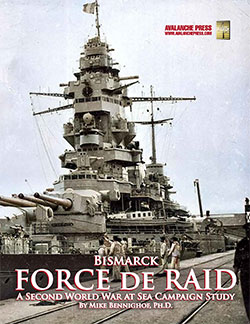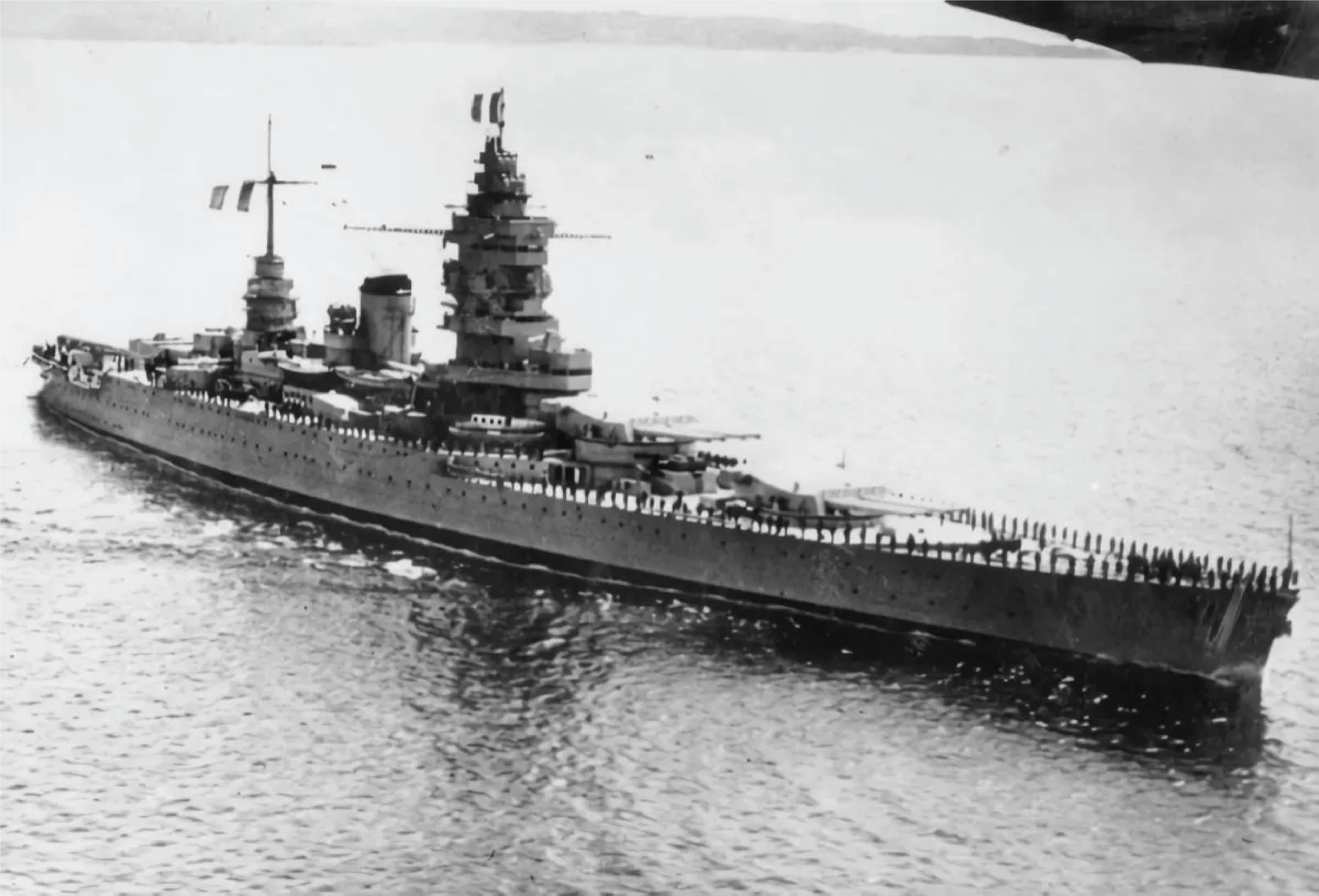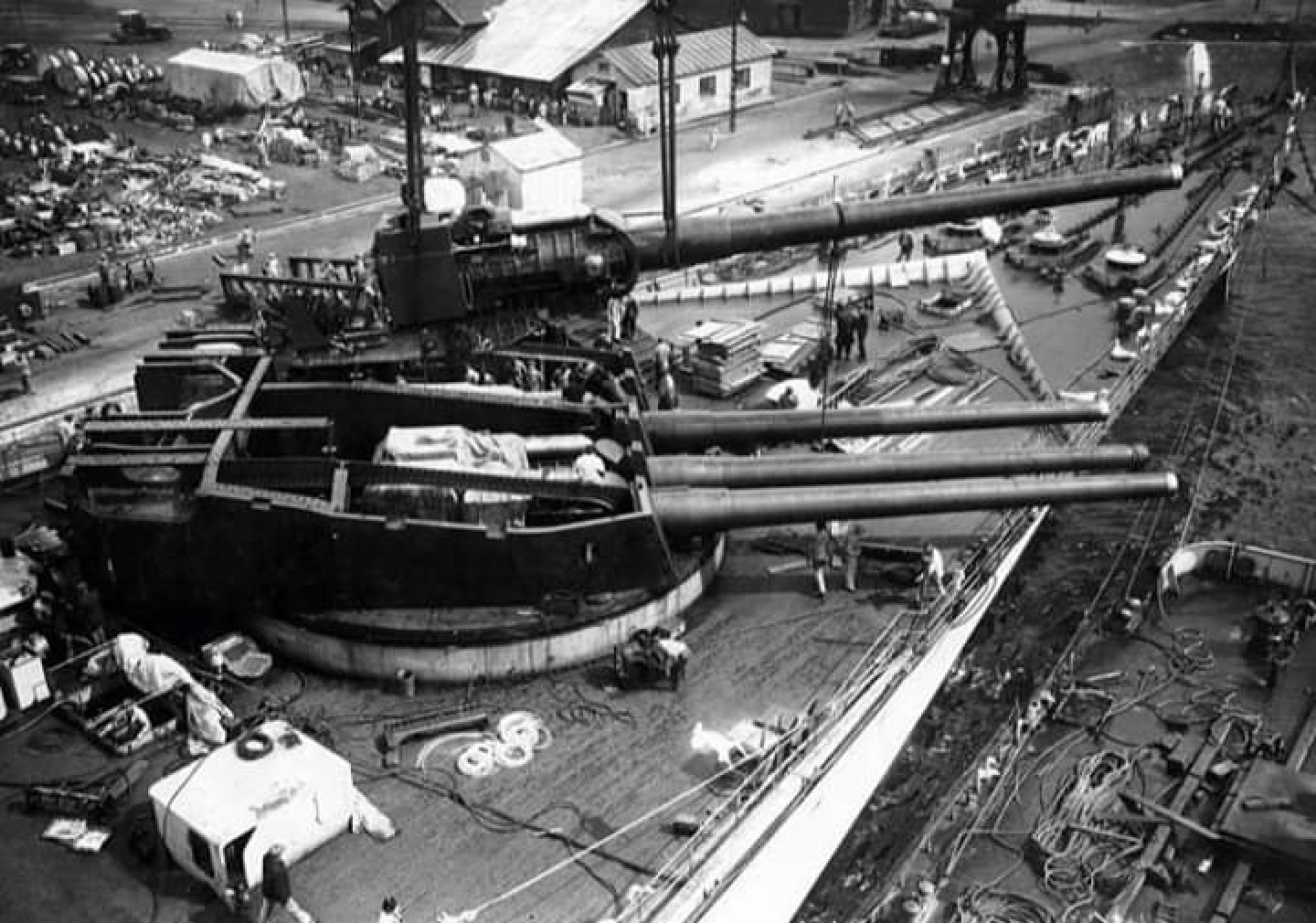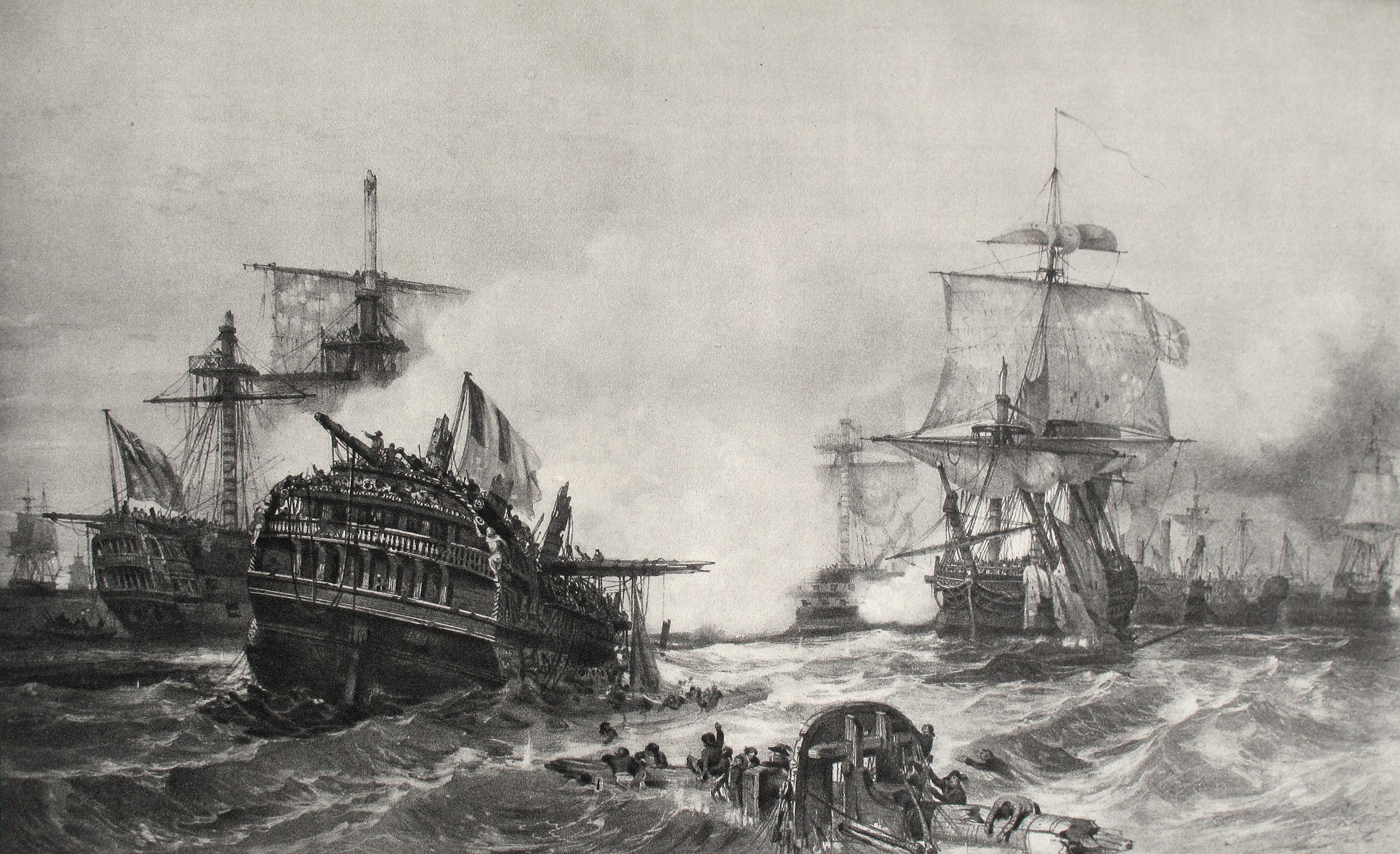| Bismarck: Force de Raid:
The Story
By Mike Bennighof, Ph.D.
June 2023
 Note: Bismarck: Force de Raid is a Campaign Study adding fourteen new scenarios to Second World War at Sea: Bismarck. They’re all based on the premise of France having to face Germany without active British participation. It’s available right now. Note: Bismarck: Force de Raid is a Campaign Study adding fourteen new scenarios to Second World War at Sea: Bismarck. They’re all based on the premise of France having to face Germany without active British participation. It’s available right now.
In 1934, French fascists rioted in Paris, hoping to overthrow the government and perhaps even the Republic itself. In the aftermath, the new leftist Popular Front government took a hard line against Adolf Hitler’s regime. That included a buildup of naval forces.
France’s ally, Britain, sought a strategy of appeasement. While Britain also re-armed, London did not participate in the economic sanctions France sought against Germany after the 1936 re-occupation of the Rhineland. At the 1938 Munich Conference, British Prime Minister Neville Chamberlain pressed his French allies to appease Germany with a slice of Czech territory, and thereby achieve “peace in our time.”
That changed in March 1939, when German troops marched into the remainder of Czechoslovakia. Chamberlain vowed – while declining to support Czech democracy – that this would never happen again. British and French policy now moved into close alignment, and by June a French Foreign Ministry analysis reported the two allies to be “perfectly in agreement” on this issue.
What might have happened, had the two allies not had such perfect agreement? Had Adolf Hitler respected the Munich accord in March 1939, and struck in September against Poland? France would have declared war to support the Poles, but would Britain?
The French Navy had built its modern fleet in response to Italian moves in the Mediterranean. The 1922 Washington naval limitations agreement gave France and Italy identical allotments for new warship construction, and identical exceptions to the rules against the radical reconstruction of existing warships. In retrospect, it seems almost designed to create a Franco-Italian naval arms race, at a time when the two nations were at least putative allies.

The crew mans the rails of the French battle cruiser Dunkerque.
But when the French looked to build new battleships in the early 1930’s, they did so to counter the new German armored cruisers rather than any planned Italian ships. The Dunkerque-class battle cruisers clearly out-classed the German “pocket battleships” – and no other capital ship in the world, planned or existing. Their obvious purpose was to defend France’s overseas communications from German surface raiders.
And so, France built ships to counter a German threat, despite an alliance with Britain and her powerful Royal Navy. The British already possessed three ships easily able to run down and destroy the pocket battleships (the battle cruisers Hood, Renown and Repulse) and did not apparently consider the threat alarming enough to retain a fourth (the battle cruiser Tiger, deleted in 1931 and scrapped in 1932, in lieu of an undoubtedly expensive re-construction).
Robert Forczyk, in his Case Red (a history of the latter part of the 1940 campaign in France), rails against the French investment in modern warships and the infrastructure to support them at a time when the nation desperately needed new tanks, artillery or even an extension of the Maginot Line. He’s not wrong: the big guns of Dunkerque and Strasbourg remained silent, after all, while the panzers rampaged through Belgium and northern France.
Yet a French policy that concentrated solely on her land and air defenses would mean placing her nautical interests solely in the hands of the British, at a time when London had proven disinterested in re-armament. The decision to build modern battle cruisers – and the battleships and aircraft carriers that followed them, but would not be completed in time to participate in 1939 – must have seemed less foolish when Chamberlain asked for a private meeting with Hitler at Munich in September 1938. The resulting agreement (which the French government of Eduard Daladier supported) directed the Czechs to cede all areas where German-speakers made up more than half of the population. The loss of those border zones, and their expensive fortifications, made the remainder of Czechoslovakia essentially undefendable.

Arming Dunkerque. Brest Naval Yard, 1935.
That France would fight Germany in the fall of 1939 with or without Britain seems rather likely. But without the German occupation of Prague to strengthen British resolve, it’s not completely clear that London would join them. The Marine Nationale had built a surface fleet that allowed Paris to pursue an independent foreign policy without deference to Britain – the very purpose of a peacetime navy.
On the outbreak of war in September 1939, Britain actually declared war some hours before France. The Marine Nationale formed the Force de Raid, built around the two battle cruisers with supporting light cruisers and the large destroyers known as contre-torpilleurs. This force, based at Brest on the Atlantic coast, would hunt down and destroy German raiders.
That deployment likely would have been the same with or without British participation. The French looked to buy armaments from the United States, and would have to import those – and any other vital goods, like grain – across the Atlantic.
Germany had likewise built up her surface fleet during the 1930’s. The 1935 Anglo-German Naval Accord permitted Germany to build surface warships up to a total tonnage matching 35 percent of the Royal Navy’s. Not coincidentally, this exactly matched the French allowance under the Washington naval agreement. This act of British appeasement almost forced the French to build up their own naval forces in response.

The crew of the French ship of the line Vengeur du Peuple was said to have fought to the last man in 1794; the Force de Raid expected to do no less 145 years later.
In 1939, German and French naval forces closely mirrored one another. Each had two modern, fast but greatly under-sized battle cruisers (which both insisted on calling “battleships’). Both had two new, modern fast battleships and two new aircraft carriers under construction.
France had seven heavy cruisers in service, though all were concentrated in the Mediterranean to face Italy (two of them would deploy to the South Atlantic to search for the German armored cruiser Admiral Graf Spee). Germany had one in commission, two fitting out and two under construction. The French greatly out-weighed the Germans among smaller warships: light cruisers, destroyers and submarines. They also had an aircraft carrier, which the Germans did not, but it wasn’t a very good one.
Our story in Bismarck: Force de Raid looks at a situation in which Britain remains neutral in September 1939 and France is forced to defend her sea lanes with her own fleet. It’s a fleet that roughly matches that of the Germans – the odds are almost exactly even. It will be up to the Force de Raid to protect France at sea.
You can order Bismarck: Force de Raid right here.
You can order Bismarck Playbook Edition right here.
Triple Bismarck
Bismarck (Playbook edition)
Bismarck: Force de Raid
Journal No. 31: Deluxe Bismarck
Retail Price: $112.97
Package Price: $90
Gold Club Price: $72
You can order Triple Bismarck right here.
Sign up for our newsletter right here. Your info will never be sold or transferred; we'll just use it to update you on new games and new offers.
Mike Bennighof is president of Avalanche Press and holds a doctorate in history from Emory University. A Fulbright Scholar and NASA Journalist in Space finalist, he has published a great many books, games and articles on historical subjects; people are saying that some of them are actually good.
He lives in Birmingham, Alabama with his wife, three children, and new puppy. He misses his lizard-hunting Iron Dog, Leopold.
Want to keep Daily Content free of third-party ads? You can send us some love (and cash) through this link right here.
|
